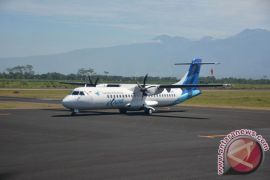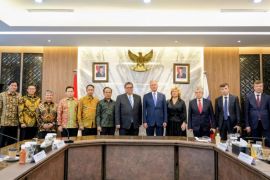Moreover, the district has become a silent witness to several historical events. Hence, in various corners of Jember District, people can find several historical buildings that are interesting to explore.
In fact, exploring some historical buildings in Jember has been a form of alternative educational tourism that can be enjoyed by local people and domestic tourists.
Such a tourism activity can surely be conducted while still implementing health protocols to prevent the spread of COVID-19 during this pandemic.
The City Bus Touring (TBK) Community -- the originator of Jember Tourism Transport -- supported by Jember's Transportation Office offers a city tour package for local people and tourists seeking a closer look at various historical buildings in the district while enjoying some city views.
The city tour, packed into three hours, is conducted using some local share taxis -- minivans called klinting kuning -- or some educational tour buses belonging to the Jember transportation office.
The tour begins with a visit to a Catholic church of St. Joseph Parish, located on Kartini Street, which was built in 1927 and is one of the historical heritage buildings in Jember.
While at the church, tourists are also given a booklet about it. One of the priests will shed light on the structure of the church and some of the ornaments there, so that tourists can gain some insights about the Catholic church.
After leaving the church, the Jember city tour group of tourists is guided to visit the old (original building) and new building of Jami' Al Baitul Amien Mosque. The original Mosque of Jami' Al Baitul Amien is the oldest mosque in Jember that was built in the Dutch colonial era.
The mosque building is also unique and iconic, as its round green dome is similar to the dome roof of the Indonesian parliament building at Senayan in Jakarta.
The mosque's round dome symbolizes the expanding spiritual needs of all mankind without being limited to certain obstacles. A dome does possess significance within the mosque — as a symbolic representation of the vault of heaven.
Moreover, the old and new Jami' Al Baitul Amien mosque buildings are connected by a pedestrian bridge.
At the old mosque is a sundial, an instrument showing the time by the shadow of a pointer cast by the sun onto a plate marked with the hours of the day, utilized to determine prayer times.
Not far from the sundial of the mosque is the Jember Zero Point Monument along with some of its prehistoric relics.
It is called the Zero Point Monument, as people can find some heritage relics, including stone tombs, menhirs -- some monolithic stones -- spread across a radius of five kilometers.
From the mosque, tourists of the Jember city tour are invited to visit other historical buildings: the Tanjung Market water tower that is also one of the historical icons in the district.
The water tower is determined as a historical heritage since the year marker at the entrance of the water tower is written in 1932.
Meanwhile, the Tanjung market itself has historical value since the Proclamation of Indonesia's independence was first heard in Jember through a radio broadcast of the country's first broadcaster Radio Republic Indonesia (RRI) that was echoed from a radio in the market.
The Dutch water tower is a towering building that is sturdy and distinctive. Tourists from the Jember city tour can go up to the rooftop of Tanjung market to catch a glimpse of the historic building while taking selfies.
Furthermore, the tour continues to the building of NV. Landbouw Maatschappij Oud Djember (LMOD), which is a structure related to the history of plantations in Jember that has existed since 1859 during the Dutch colonial era.
NV. LMOD is the name of a trading business in the plantation sector, with the company's initial commodity at that time being tobacco, which later expanded to coffee and sugar products.
After a walk around the NV LMOD building, tourists continue the tour by strolling along Gajah Mada Street to explore several ancient buildings along the road and then stop by at the ancient Roudhlotul Muchlisin mosque in Jember District.
After exploring several historical buildings and sites, tourists are invited to unwind over coffee and tea at Cafe Rollas, with an ancient historical building.
Traveling around Jember to explore some historical buildings is indeed an alternative and also educational tour that can be enjoyed at a reasonable rate of Rp17,500 (around US$1.22) per person.
Domestic tourist Fitri was pleased with the Jember city tour package that took her around while increasing her knowledge of historical events and buildings in Jember.
The Jember city tour package has also proffered some benefits to local transportation actors since the tour can also be conducted using some local conventional modes of transportation, such as bicycle rickshaw and conventional taxibike as well as some other modes of local transportation, which had slumped on account of the social restrictions implemented during the pandemic
The local transport drivers have also been equipped with skills to serve travelers and tourists coming to Jember, so that they are ready to serve both domestic and foreign tourists.
The local-tourism transportation program in the district is expected to further promote tourism in Jember, so that it has an impact on increasing tourist visits to the district as well as driving the local economy, especially for local public transport drivers in Jember.
Finally, the tourism program in turn is expected to help boost the welfare of local communities.
Editor: Rahmad Nasution
Copyright © ANTARA 2021










